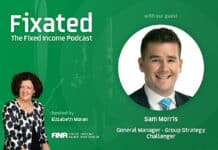
Late last week, Janus Henderson hosted a global media conference, which I attended, and I wanted share with you some of the high level index data observations and 2022 forecasts. The note covers global equities, global bonds and energy.
Global Dividends
Dividends in 2020 were down 12% globally according to the Janus Henderson global index. A third of all companies cut, suspended or cancelled dividend payments completely.
In 2021, dividends were more resilient and by 3Q21, 90% of companies in the index had held or increased dividends.
In 2022, Janus Henderson expect headline dividends will grow 17% and 15% on an underlying basis, helped by special dividends. Two key factors driving growth are:
- Mining companies aided by growing commodity prices resulted in record profitability. BHP was the world’s largest payee in 2021.
- In 2020, regulators stepped in to prevent banks paying dividends. This year, regulations have been removed or restrictions reduced and bank dividends are 90% back to where they were pre pandemic which has driven much of the growth they’ve seen in the last 12 months. Global dividends are now higher than pre pandemic and Janus Henderson expect that growth to continue.
Janus Henderson forecast $1.25 trillion dividends will be paid globally in 2022, which equates to 5-6% growth, which over the longer term, is about average.
Global Bonds
The Sovereign Debt Index covers 50 global sovereigns. Debt for the group is affordable and sustainable.
Last year, borrowing was sharply higher but costs did not increase. The world economy has rebounded strongly and the global ratio of debt to GDP fell.
In 2020, global corporate debt was up 10% to $13.5 trillion dollars. In the same year, global sovereign governments borrowed an equivalent of 8 years of debt. Eight out of ten countries slipped into a recession and governments added $9.3 trillion to their tap, equivalent to one seventh of the world’s GDP.
This year global government debt will rise but will rise faster than economies can grow.
Over the last few years, the theme has been convergence as governments and central banks provided huge support to their economies.
In 2022, the theme is divergence with governments intending to tighten policies through higher interest rates and coinciding with the end of quantitative easing programs.
So, a fundamental regime change and the key to more volatile markets. Janus Henderson expect normalisation of policy and in the unwinding of monetary and fiscal policies, profound consequences for asset classes and markets.
They predict there will be huge risk and opportunity when markets and policy makers get it wrong.
This year is principally about preserving capital in a rising rate environment in fixed income.
The policy unwind will have a range of implications for a range of sectors such as credit in investment grade, high yield and particularly highly leveraged companies, which will be challenged. More prudent corporations will benefit from the economy.
Governments will be challenged in providing further fiscal support especially as interest costs start rising.
Emerging markets will fight a double barrel in higher rates and costs with less government support than during the pandemic. Developed markets like the US are better equipped to handle the normalisation of policy. The US is experiencing a 50 year low in unemployment, very strong and robust growth.
The biggest opportunity Janus Henderson see for investors is not in credit rather risk free government bonds and interest rate swaps when markets over price the future path of monetary rate policy that may never eventuate.
A fascinating year ahead, with many twists and turns ahead, but ultimately restoring the qualities of fixed income as an asset class, setting up for future, better returns.
The corporate debt index rose substantially in 2021 and they expect another big year in 2022. There is a decent growth outlook and expect an increase in capital expenditure, dividends, share buy backs and M&A.
Looking at the different segments, in the high yield space, we may even have net neutral rises in debt or net negative because while there will be new supply to fund M&A, we also have rising stars that will be upgraded from sub investment grade to investment grade credit ratings. Also, the crowding out from the loans market and the private debt market as well.
So, Janus Henderson expect the strong growth outlook allowing for higher corporate debt with improving credit quality as companies get their balance sheets in better order.
Energy
It’s the start of a mega cycle for commodities, particularly future-facing metals that are critical to decarbonisation like lithium, copper, nickel, steel, aluminium and the list goes on.
UBS estimates more than $140 trillion dollars of cumulative capex is required by 2050 just to decarbonise the world’s energy system. So, it’s easy to imagine that this is the biggest challenge in the coming years.
For example, the rapid rise in electric vehicle adoption with an estimated 83% increase in sales last year taking it to 7.2% of global car sales, versus 2.9% the year before.
It’s not just energy systems that need funding. Massive investment is needed in reducing the greenhouse gas impact of food production systems. For example to reduce food waste, animal footprint and more.
Janus Henderson tracks markets and used data from three indices to compile these statistics – The Sovereign Debt Index, The Corporate Debt Index and the Global Dividend Index. Janus Henderson is a global asset manager with more than 340 investment professionals and expertise across all major asset classes. It has more than US$594.7bn in funds under management. The company is an active manager offering clients the opportunity to outperform passive strategies over the course of market cycles.






























